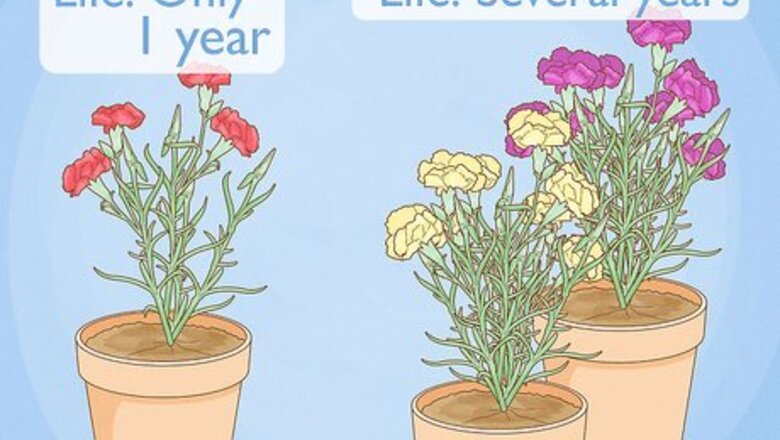
views
Encourage Repeat Blooming

Understand the difference between annuals and perennials. The flowers can also be referred to as border carnations (annuals) and perpetual flowering carnations (perennials). Annuals are plants that only live for one year, while perennials live for several years. Perpetual Flowering Carnations offer the largest flower size but are less frequently scented than other varieties. This article will focus on Perpetual Flowering Carnations and how to maintain their flowering year after year.
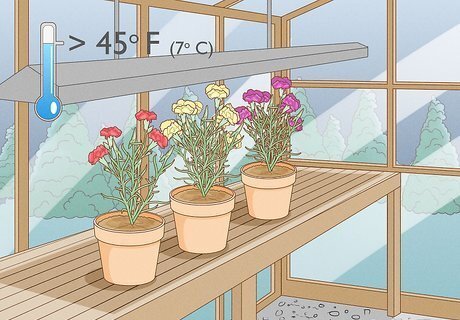
Protect your carnations from frost. Perpetual flowering carnations need to be protected from frost in order to remain alive and in flower. Most gardeners use a greenhouse or polytunnel, which is also called a hoop greenhouse. To learn how to build a hoop greenhouse, click here. It’s important that the temperature does not fall below 45 °F (7 °C), so an unheated space may not work if you live in a cold climate. In milder climates you may get by with a polytunnel strung with lights, which may offer enough heat to keep plants alive. You can also bring Carnations inside as house plants.
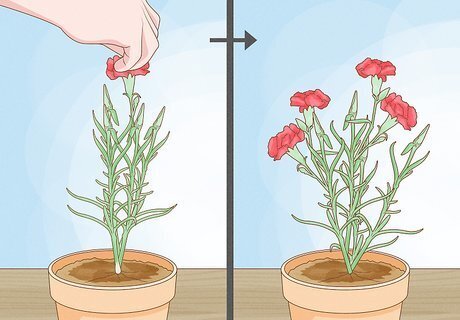
Use the ‘stopping’ technique. Many gardeners like to use a practice called ‘stopping’ to encourage bushy plant growth. To do this, remove the growing tip from the young plant and the bud at the tip of each side shoot. This encourages side blooms to bloom as well, rather than one just tall flowerhead. The height you snap the plant stem off at is the height at which it should start to bush from, meaning you can influence the height of your plant. Stopping will delay the flowering but you will get more flowers from your plant. You can assume good-quality nursery plants have been stopped already but if you grow from seed, do this when the plant stem has about a half dozen leaf pairs or is about 6 inches (15.2 cm) in height.

’Dead head’ your plant. It’s a good idea to pinch off dead flower heads as the blooms wither. This will prevent the plant from forming seed heads, which discourage new flower production. Seed heads take a lot of your plant’s energy to form, which means it will have less energy to produce blooms.

Avoid using manure or nitrogen-rich products. Carnations won’t bloom as well if there is a high nitrogen presence in the soil so avoid incorporating manure or high nitrogen fertilizers. When planting them outside, try to prepare the soil several weeks in advance. To do this: Add some lime to the soil to improve the alkalinity, and a fertilizer that isn’t too high in nitrogen. Try to fertilize weekly during the growing season.
Propagating Your Carnations

Try dividing your carnations to rejuvenate and propagate your plant. Carnation plants can be rejuvenated by splitting their root masses into separate plants. To do this, dig up an older carnation plant and use your hands to separate it into two. Replant the divided parts and give them a good watering. You should not let the plant dry out until it is established.

Consider trying to take cutting of your plant if you’d rather not divide it. Carnations grow well from cuttings. You may find that a cutting is a good way to replace plants once they are past their prime, which is usually when they reach two to three years of age. It’s important to only propagate from healthy ‘parent’ plants. To make a cutting: Cut a non-flowering piece of one of your plant’s shoots. Try to do this first thing in the morning if you can. This cutting should be about four inches long. Cut below a leaf node using a very sharp, clean blade. The shoot should be recent growth from the same year. Remove the lower leaves. Dip the cut into a rooting hormone and then plant it halfway down a planter that has been filled with coarse sand. Water, then place a clear plastic bag around the plant. Place this in a bright spot out of direct sunlight, such as a window ledge that does not get full sun. Maintain moisture until the plants are established and you can see growth.
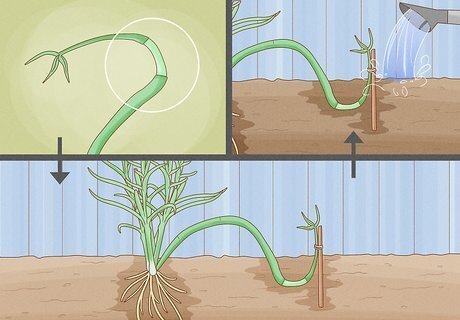
Try layering to propagate your carnations. Carnations can also be propagated by a method called ‘layering’. To do this, prepare the soil around the plant you wish to propagate as you would for planting a cutting (mixing in sand to compost or peat, then watering the area). Next: Find a healthy side shoot and strip off the lowest leaves. Halfway along the length make a vertical slit in the stem with a sharp knife. Bend the stem over and plant the cut midsection into the ground. A good tip is to use a bit of wire or a hairpin to anchor it in the soil. It will eventually root from the cut bit of the stem. Keep the soil moist for about six weeks, then you can cut it from the parent. Leave it for another month before relocating it.
Caring for Carnations
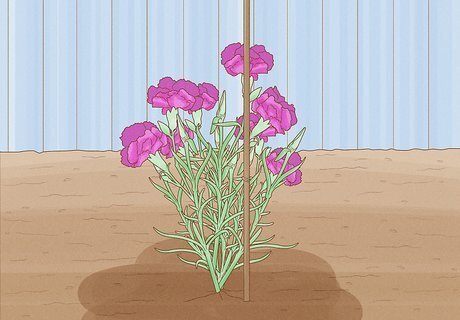
Consider helping your plant grow with a stake. Young carnations may need staking to provide support, especially in windy areas and if they have large flowers that will cause them to bend under the weight. Stake plants early on in their lives to help them grow straight stems. To do this: Drive a sturdy garden cane into the soil and loosely tie the plant to it with string. Don’t tie it too tightly.
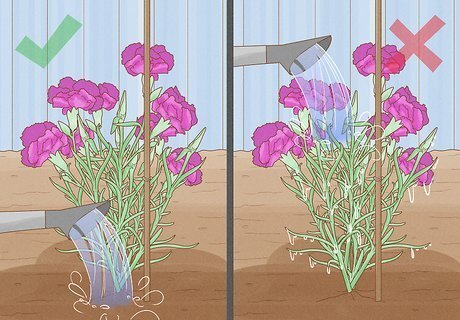
Make sure to give your plants enough water. Keep plants watered during dry periods. Carnations will prefer soil to be moist but not wet. If foliage is yellow it indicates over watering, so you should ease off. Try to keep the foliage dry. Avoid splashing water onto the plant when watering and don’t mulch the plant as this can impede the air circulation around the plant. Carnations prefer a well drained soil and are prone to root and collar rot in wetter conditions.
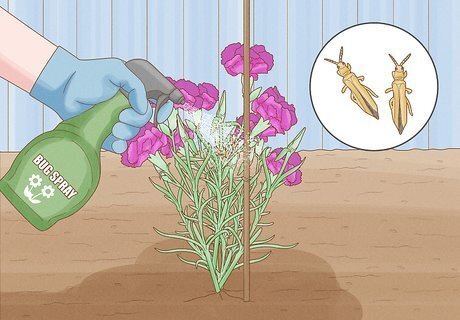
Protect your carnations from pests. Carnations will sometimes be affected by bugs. Keep an eye out for signs of infestation—a regular bug spray will usually keep these under control. Thrips are the biggest cause for concern; white markings on petals usually indicate you have a problem. Use a bug spray to get rid of these pests.



















Comments
0 comment